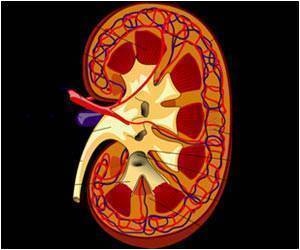A simple and straightforward approach has been used by the researchers in creating beta cells from human kidney cells.
Highlights
- Previously, researchers created beta cells using stem cells.
- In the new approach artificial beta cells are created using human kidney cells or HEK.
- The artificial beta cells act as both sugar sensors and insulin producers. Artificial beta cells have been created using human kidney cells. A simple and straightforward approach has been used by the researchers led by ETH Professor Martin Fussenegger at the Department of Biosystems Science and Engineering (D-BSSE) in Basel.
- to measure the glucose concentration in the blood.
- to produce enough insulin to effectively lower the blood sugar level.
- Martin Fussenegger et al. β-cell–mimetic designer cells provide closed-loop glycemic control.Science ; (2016) DOI: 10.1126/science.aaf4006
Type 1 diabetes is an autoimmune disease in which the body's immune system acts against its own insulin-producing beta cells in the pancreas and destroys it.
This results in the build up of glucose in the blood leading to diabetes. Since blood glucose levels are constantly fluctuating in diabetes, it can lead to serious conditions like hypoglycemia, shock, cardiovascular diseases and renal failure.
The function of artificial beta cells is very similar the natural ones:-
In the previous approaches, researchers used stem cells that were matured into beta cells either by adding growth factors or by incorporating complex genetic networks.
The natural glucose transport proteins and potassium channels in the membrane of the HEK cells, were used and they were enhanced using voltage-dependent calcium channel and a gene for the production of insulin and GLP-1, a hormone involved in the regulation of the blood sugar level.
The HEK cells' natural glucose transport protein carries glucose from the bloodstream into the interior of the artificial beta cells.
The potassium channels close when the blood sugar levels level exceed a certain threshold.
Due to the flipping of voltage distribution at the membrane the calcium channels are opened. This causes the calcium to flow in triggering signals within the HEK cells and leading to the production and secretion of insulin or GLP-1.
Laboratory experiments on diabetic mice revealed the artificial beta cells to be extremely effective. When implanted into mice, the modified HEK cells worked reliably for three weeks producing sufficient quantities of insulin.
"They worked better and for longer than any solution achieved anywhere in the world so far," says Fussenegger.
Long road ahead
Various rigorous clinical trials should be conducted before the these artificial beta cells hits the market.
Clinical trials of are expensive and often last several years. "If our cells clear all the hurdles, they could reach the market in 10 years," the ETH professor estimates.
The findings are presented in the latest edition of the journal Science.
Reference
Source-Medindia















